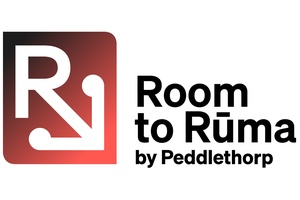New app brings te reo Māori into architectural plans
In an industry-leading move to bring te reo Māori into the realm of architecture and design, New Zealand company Peddlethorp launches ‘Room to Rūma’.
Room to Rūma is a word library that can be loaded into the widely used Autodesk Revit software. Developed with the support of Te Taura Whiri i te Reo Māori (the Māori Language Commission), the application takes simple English words like ‘entrance’, or ‘conservatory’ within architectural plans and translates them into te reo Māori.
Speaking on why they’ve created the application, Richard Goldie, Director at Peddlethorp says, “Architecture is about being authentic, and how can it be authentic unless you are going to the people, the stories of the land, and the language which is so critical. We see Room to Rūma as a small way to bring more reo Māori into our work.”

The launch marks a significant milestone for the normalisation of te reo Maori within architecture, design and building sectors. By seamlessly integrating te reo into Autodesk Revit, the tool not only brings the reo to users in a welcoming way, but also sets a precedent for the future use of indigenous languages here and abroad.
Peddlethorp’s Derek Kawiti and Richard Atkins were a key part of the development of Room to Rūma, with the assistance of Whatarangi Winiata, a young architectural Masters student at Te Herenga Waka Victoria University. It’s a project that Te Taura Whiri i te Reo Maori has been proud to support.
“It’s an important development,” says the Chief Executive of Te Taura Whiri i te Reo Maori, Ngahiwi Apanui-Barr. “Younger generations raised in te reo Maori want to see their language reflected as they transition into the workplace. It’s also important for the vast majority of New Zealanders who value and celebrate te reo Maori as an important part of our identity.”
Room to Rūma is available now. Learn more and download here.
Room to Rūma will be free for the first three months. After that there will be a small fee for use. All profits made will go towards funding scholarships for future architecture students.










